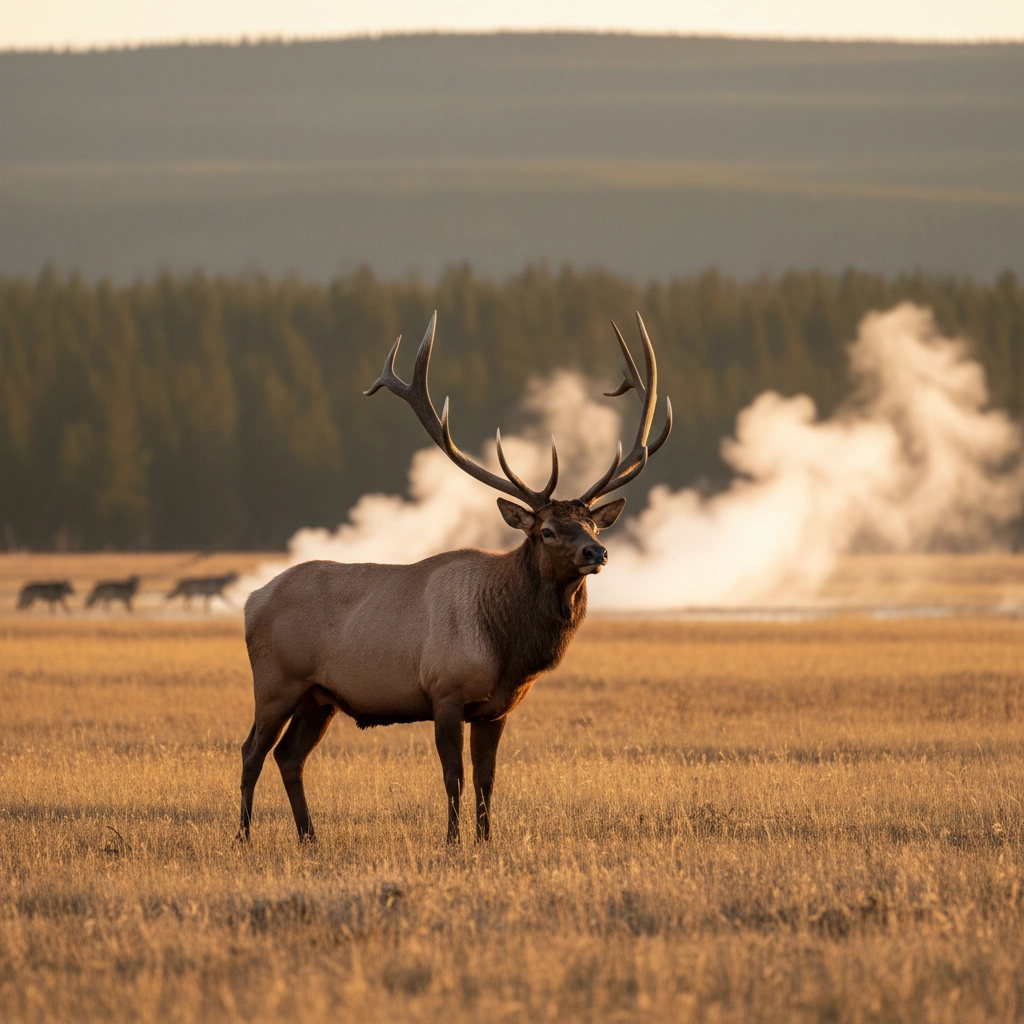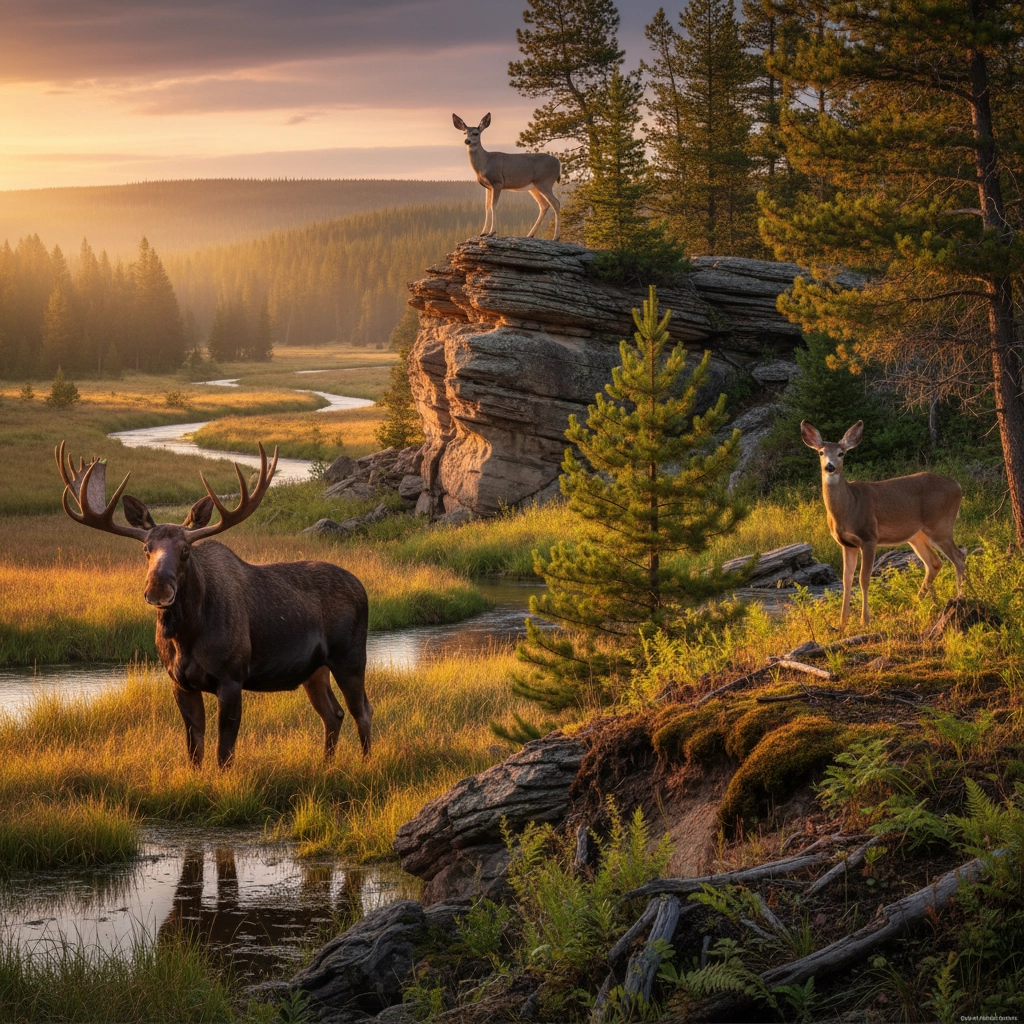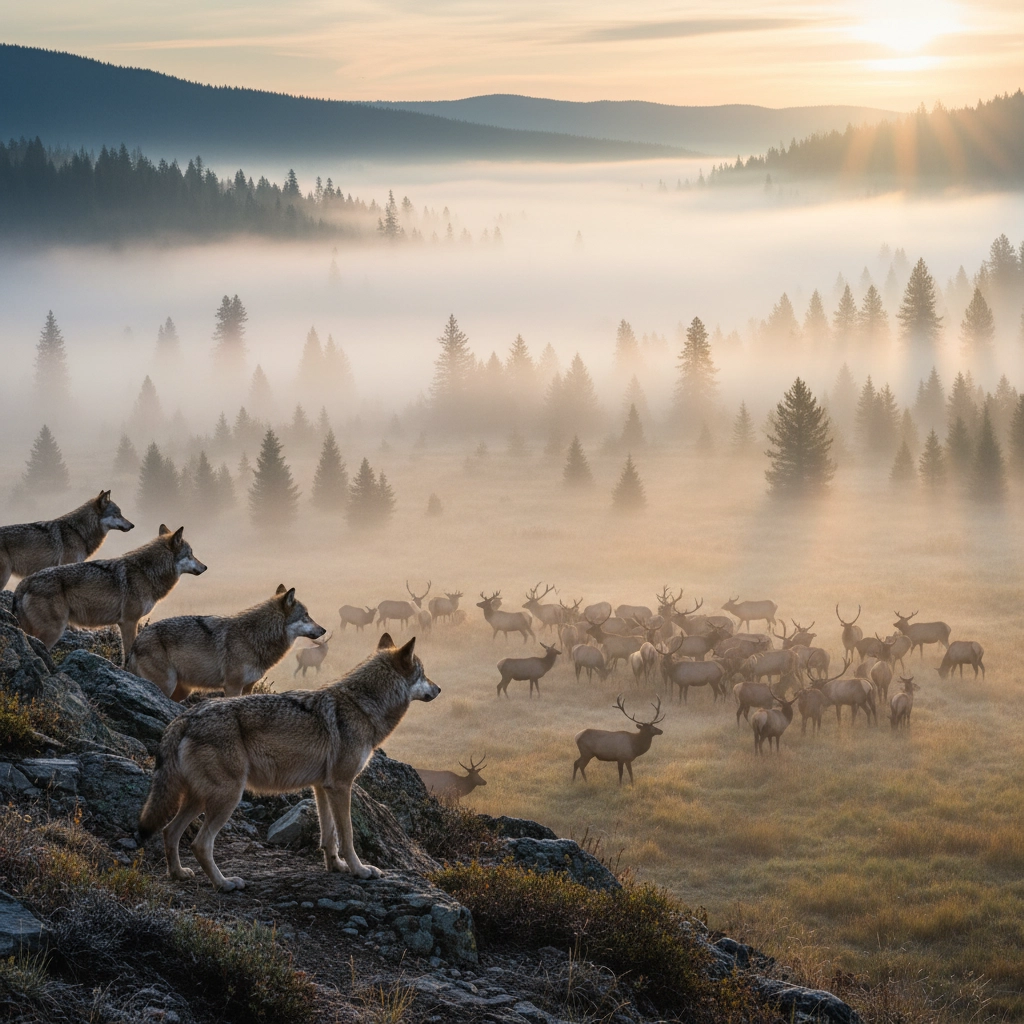Elk, Moose, and Deer: Yellowstone's Ungulates and Their Role in Ecosystem Health
- Caleb Mullenix
- Oct 28
- 5 min read
Understanding the intricate relationships between Yellowstone's ungulate populations and ecosystem health is essential for educators preparing students to witness one of North America's most complex ecological systems. The park's eight ungulate species: including elk, moose, mule deer, and white-tailed deer: serve as fundamental architects of ecosystem structure, influencing everything from predator populations to vegetation patterns across the Greater Yellowstone region.
Ensure that your students grasp the significance of these large herbivores before arriving at the park. These animals are not merely inhabitants of the landscape; they are keystone species whose presence and behavior determine the health and function of the entire ecosystem. Preparing students with this foundational understanding will maximize their learning opportunities during field observations.
Elk: The Ecosystem's Cornerstone Species
Begin by emphasizing elk's role as Yellowstone's most critical ungulate species. With approximately 30,000 elk inhabiting the park during summer months, these animals represent the most abundant large mammals and serve as the backbone of the ecosystem's food web. Paleontological evidence confirms continuous elk inhabitation for at least 1,000 years, demonstrating their integral role in shaping Yellowstone's ecological character.
Advise students to observe how elk function as a keystone species: their ecological effects extend far beyond what their numbers alone might suggest. Elk comprise approximately 85% of winter wolf kills and serve as the primary food source for grizzly bears, black bears, coyotes, mountain lions, and golden eagles. This relationship creates a direct correlation between elk abundance and predator survival rates.

Encourage students to examine the vegetation impact of elk grazing during field studies. As herbivores, elk control plant communities through their feeding behaviors, creating a dynamic balance between herbaceous plants and tree populations. When elk numbers decrease, observe how grasses and certain tree species increase. Conversely, areas with higher elk density demonstrate intensified grazing pressure on rangelands.
Create opportunities for students to document these vegetation patterns through structured observation activities. The relationship between elk density and plant community composition provides an excellent real-world example of ecosystem dynamics that students can witness firsthand.
Moose and Deer: Supporting Cast in the Ecosystem Drama
Direct student attention to the important but distinct roles played by moose, mule deer, and white-tailed deer within Yellowstone's ungulate community. While elk dominate the ecosystem, these species contribute significantly to vegetation management and serve as additional food sources for the park's predator populations.
Emphasize the historical context of deer populations to help students understand ecosystem recovery. Human harvest in the mid-1870s to 1880s greatly reduced mule deer, bighorn sheep, and pronghorn numbers. Mule deer have since recovered to substantial levels, demonstrating nature's resilience when given proper protection and management.

Encourage students to compare the different habitat preferences and behaviors among these ungulate species. Moose typically inhabit wetland areas and consume aquatic vegetation, while deer species demonstrate more varied feeding patterns across different elevation zones. These distinctions create diverse ecological niches that support the park's overall biodiversity.
The Great Migration: Yellowstone's Breathing Pattern
Prepare students to witness one of North America's most spectacular natural phenomena: the seasonal migration of ungulate herds. Ecologists describe these movements as Yellowstone "breathing in elk during the spring and then exhaling them in late autumn." Upwards of a dozen major elk herds converge upon Yellowstone from all directions during spring and summer, following pathways established over thousands of years.
Discuss with students how these migrations represent some of the last remaining long-distance wildlife movements in North America. Individual animals may traverse thousands of miles throughout their lifetimes, creating biological connectivity across the Greater Yellowstone region encompassing Wyoming, Montana, and Idaho.

Share detailed information about the ecological significance of these migration patterns. As ungulates move seasonally, they transport nutrients across vast landscapes, maintaining ecosystem productivity through natural fertilization processes. This nutrient cycling is essential for sustaining diverse plant communities and supporting the complex food webs that define the Greater Yellowstone Ecosystem.
Encourage students to map migration routes and seasonal movements during their visit. Understanding these patterns helps students appreciate the scale of ecosystem management required to protect these species and their habitats.
Predator-Prey Relationships and Ecosystem Balance
Emphasize the critical importance of predator-prey relationships in maintaining ecosystem health. The reintroduction of wolves to Yellowstone in 1995 created a natural experiment that students can observe and study. Wolf predation on elk has created cascading effects throughout the ecosystem, influencing vegetation recovery and altering elk behavior patterns.
Advise students to observe how elk modify their behavior in response to predator presence. Areas with higher wolf activity often show different vegetation patterns due to changed elk grazing behaviors: a phenomenon known as the "landscape of fear." This behavioral modification demonstrates how predators influence ecosystems beyond direct predation.
Create structured observation opportunities for students to witness these predator-prey dynamics. Early morning and evening viewing sessions provide optimal chances to observe elk herds and their vigilant behavior in areas where predators are active.
Contemporary Challenges and Conservation Imperatives
Address the serious challenges facing Yellowstone's ungulate populations with students to develop their understanding of conservation complexities. Development and habitat fragmentation represent the most significant threats to these species, as urban expansion, agriculture, and ranching encroach upon historic winter ranges.
Discuss the impact of infrastructure development on wildlife movement patterns. Roads create significant barriers to ungulate migration, and wildlife-vehicle collisions remain far too common throughout Montana, Wyoming, and Idaho. Share specific examples of wildlife crossing structures and corridor conservation efforts to help students understand practical conservation solutions.

Emphasize the emerging threat of Chronic Wasting Disease (CWD) to deer and elk populations. Research confirms that CWD transmits efficiently when deer concentrate in specific areas, making traditional management practices like winter feeding potentially problematic. The National Elk Refuge's feeding program, while historically essential for species preservation, now faces phaseout due to disease transmission concerns.
Encourage students to consider the complex balance between wildlife management and conservation goals. These challenges require innovative solutions that accommodate both wildlife needs and human development pressures.
Educational Opportunities and Field Study Applications
Prepare comprehensive field study activities that capitalize on ungulate observation opportunities. Create structured data collection protocols for students to document herd sizes, behavior patterns, and habitat preferences across different park locations and elevations.
Develop comparative analysis projects examining ungulate population dynamics over time. Historical population data provides excellent opportunities for students to practice data interpretation and understand long-term ecological trends.

Encourage students to examine the interconnections between ungulate health and overall ecosystem function. These relationships demonstrate fundamental ecological principles including energy flow, nutrient cycling, and species interdependence that form the foundation of ecological science education.
Ensure that students understand the broader conservation implications of their observations. Yellowstone's ungulate populations serve as indicators of ecosystem health and demonstrate the importance of large-scale habitat protection and corridor conservation efforts.
The study of elk, moose, and deer in Yellowstone provides unparalleled opportunities for students to witness ecosystem dynamics in action. These ungulate species collectively maintain the biological foundation of one of North America's most remarkable ecosystems, offering students direct experience with complex ecological relationships that will enhance their understanding of conservation biology and ecosystem management principles for years to come.



Comments